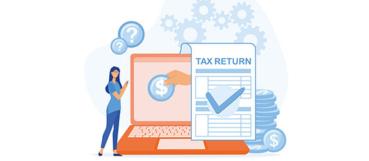Social Security tax update: How high can it go?

Employees, self-employed individuals and employers all pay Social Security tax, and the amounts can get bigger every year. And yet, many people don’t fully understand the Social Security tax they pay.
If you’re an employee
If you’re an employee, your wages are hit with the 12.4% Social Security tax up to the annual wage ceiling. Half of the Social Security tax bill (6.2%) is withheld from your paychecks. The other half (also 6.2%) is paid by your employer, so you never actually see it. Unless you understand how the Social Security tax works and closely examine your pay statements, you may be blissfully unaware of the size of the tax. It’s potentially a lot!
The Social Security tax wage ceiling for 2024 is $168,600 (up from $160,200 for 2023). If your wages meet or exceed that ceiling, the Social Security tax for 2024 will be $20,906 (12.4% x $168,600). Half of that comes out of your paychecks and your employer pays the other half.
If you’re self employed
Self-employed individuals (sole proprietors, partners and LLC members) know all too well how hard the Social Security tax can hit. That’s because they must pay the entire Social Security tax bill out of their own pockets, based on their net self-employment income. For 2024, the Social Security tax ceiling for net self-employment income is $168,600 (same as the wage ceiling for employees). So, if your net self-employment income for 2024 is $168,600 or more, you’ll pay the maximum $20,906 Social Security tax.
Projected future ceilings
The Social Security tax on your 2024 income is expensive enough, but it could get worse in future years — much worse, according to Social Security Administration (SSA) projections. That’s because the Social Security tax ceiling will continue to go up based on the inflation factor that’s used to determine the increases. In turn, maximum Social Security tax bills for higher earners will go up. The latest SSA projections for Social Security tax ceilings for the next nine years are:
- $174,900 for 2025,
- $181,800 for 2026,
- $188,100 for 2027,
- $195,900 for 2028,
- $204,000 for 2029,
- $213,600 for 2030,
- $222,900 for 2031,
- $232,500 for 2032 and
- $242,700 for 2033.
These projected ceilings are not always accurate (they could be higher or lower). If the projected numbers pan out, the maximum Social Security tax on wages and net self-employment income in 2033 will be $30,095 (12.4% x $242,700).
Your future benefits
Despite what you pay in, you might receive more in Social Security benefits than you pay into the system. An Urban Institute report looked at some average situations. For example, a single man who earned average wages every year of his adult life and retired at age 65 in 2020 would have paid about $466,000 in Social Security and Medicare taxes. But he can expect to receive about $640,000 in benefits during retirement. Of course, there are many factors involved and each situation is unique. Plus, these calculations don’t account for the interest the Social Security tax dollars would have earned over the years.
Some people think the government has set up an account with their name on it to hold money to pay their future Social Security benefits. After all, that must be where those Social Security taxes on wages and self-employment income go. Sorry, but this is incorrect. There are no individual accounts — just a promise from the government.
Is the Social Security system financially solid? It’s on shaky ground. Congress has known that for years and has done nothing about it (although there have been many proposals on how to fix things). A Social Security Administration report states that “benefits are now expected to be payable in full on a timely basis until 2037, when the trust fund reserves are projected to become exhausted. At the point where the reserves are used up, continuing taxes are expected to be enough to pay 76% of scheduled benefits.”
The agency adds that “Congress will need to make changes to the scheduled benefits and revenue sources for the program in the future.” These changes could include a higher age to receive full benefits, additional Social Security tax hikes in the form of higher rates, some tax-law revision that effectively implements higher ceilings or a combination of these.
Stay tuned
The Social Security tax paid by many individuals will continue to go up. If you operate a small business, there may be some strategies than can potentially cut your Social Security tax bill. If you’re an employee, you need to take Social Security into account in your financial planning. Contact us for details.
© 2024





